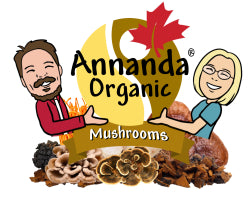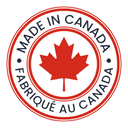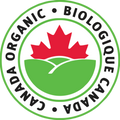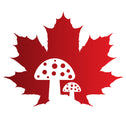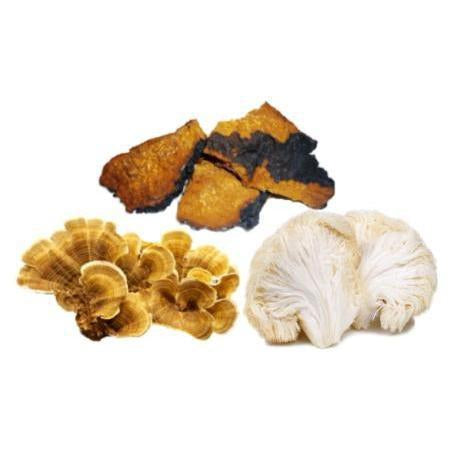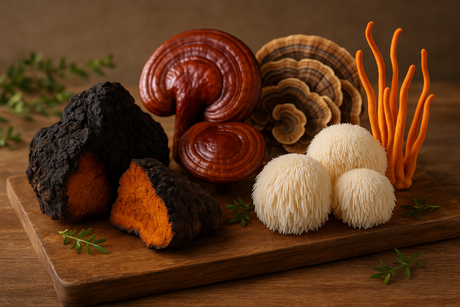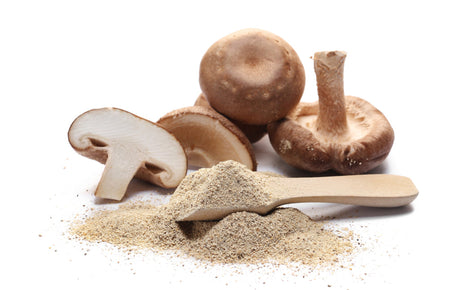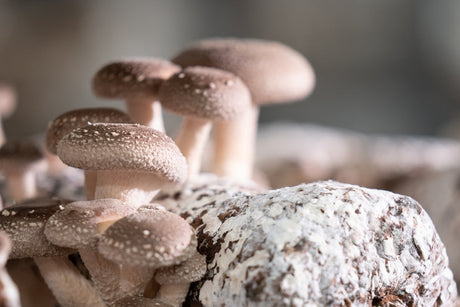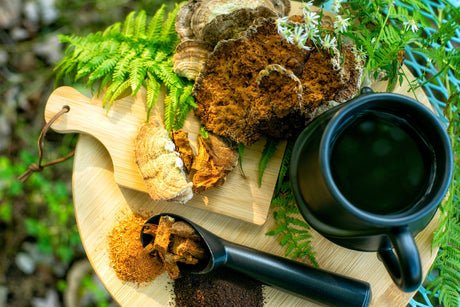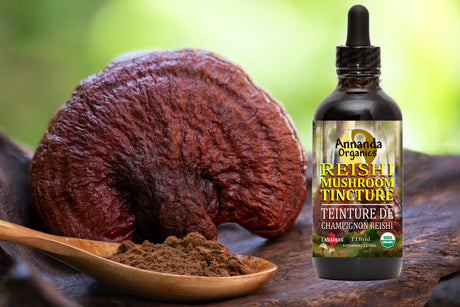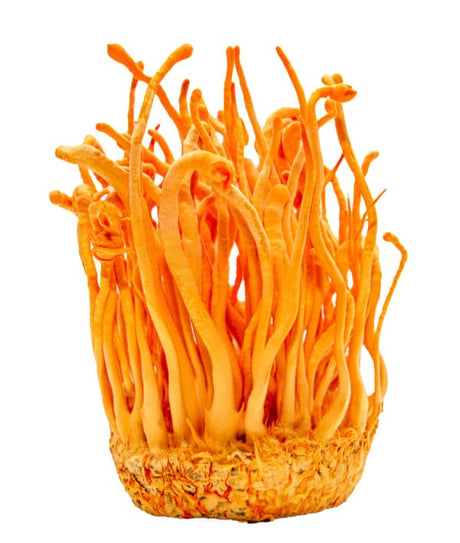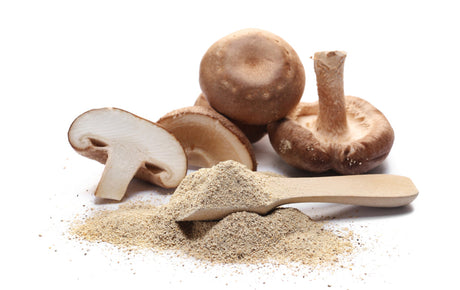We tend to forget that modern day medicine, including many anti-cancer chemo therapies are inspired from natural origins. The Application of many products used in folk remedies have been valid pointers to the development and discovery of new compounds with tremendous therapeutic potential.
Examples include camptothecin derived from the bark and stem of the tree Camptotheca acuminata used in Chinese traditional medicine [1], vinca alcaloids derived from Madagascan periwinkle [2] or taxanes derived from the Pacific Yew [3]. These “first-generation” natural chemotherapeutic agents are directed mostly against housekeeping processes and are in no way cancer-specific.
The point being, it is becoming increasing important to discover the treasure of compounds within natural products to expand our understanding in order to sharpen the tools of oncology used today.
Throughout history medicinal mushrooms have been used by mankind to treat various diseases including cancer. Now, more than ever, mushrooms are being extensively studied to reveal their chemical nature as it applies to the biomedical capacity to help benefit us. Specifically the targeted treatment of cancer that is not harmful to healthy tissues being the desired goal.
For centuries chaga (Inonotus obliquus), Lion's Mane (Hericium erinaceus) and Turkey Tail Mushrooms (Trametes versicolor) in particular have widespread use in Asian and Far Eastern folk medicine that can seem to raise the eyebrow of even the most enthusiastic skeptic.
Modern day biochemical science, upon revealing the complex and multi-level nature of there anti-cancer potential, demonstrates the remarkable potential of fungal compounds and there relevance to support cancer treatment.
Anti tumor substances derived from chaga, lion's mane and turkey tail mushrooms have been a part of traditional medicine since the antiquity [4]. Fungal treatment officially appeared in Traditional Chinese Medicine several thousand years ago [5].
The ancient Chinese pharmacopoeia included hundreds of herbal and fungal species and were considered to be the most effective natural remedies for various types of tumors [5]. In other countries of East and Southeast Asia, mushrooms were also highly valued and rated as “beneficial to health” for centuries.
Plant and fungal products including chaga mushrooms were also widespread in Russia, representing the main medicinal resources until the 18th century [6].
It is encouraging to learn that the rate in which fungi are being researched and studied has increased exponentially in the last 60 years.
However, it is still alarming to note that 90% of fungal species are still not being studied or analyzed for there antibiotic and anti tumor potential.
The current focus of research today is within the realm of cytotoxic or cytostatic effects on cancer cells, which effect both harmful and health cells as well.
What is needed is specific investigation of oncogenic pathways which directly target cancer cells specifically. A more concentrated focus on tumor specific activity and regulation such as pro-proliferation signaling, regulation of apoptosis, cancer specific metabolism, angiogenesis, metastasis and modulation of the immune system are areas in which fungi compounds are still not being explored to their full potential.
Mushrooms are a peculiar species that offer hundreds of diverse compounds that can affect several cancer related processes in synergistic ways to support cancer treatment. The study of fungal compounds and their benefits is important as well as there anti cancer effects caused by the combination of molecules in their extract derivatives.
The fields of cancer fungal therapy and antitumor agents are by far not limited to Lion's Mane (Hericium erinaceus), Turkey Tail (Trametes versicolor) and Chaga (Inonotus obliquus).
These species are however a rich source of bioactive compounds such as polyphenols, polysaccharides, glucans, terpenoids, steroids, cerebrosides and proteins, which can be used for treatment of various cancers
Lion's Mane Mushroom and Cancer
Hericium erinaceus, class Agaricomycetes, order Russulales, family Hericiaceae, is an edible medicinal mushroom It is also known under the name “Lion's mane” in English, “Yamabushitake” in Japan or “ Hóutóugū ” in China.
Heralding special attention from the scientific community in recent years, Lion's Mane is of particular interest for its primary and secondary metabolites. Among the isolated compounds erinacines derived from the mycelium and hericenones derived from the fruiting bodies [7].
A significant part of research has been focused on neuroprotective properties of the lion's mane mushroom, which are now extensively described in many works [8].
Another large area of possible therapeutic and anti-carcinogenic application of Lion's Mane mushroom is its influence on the digestive organs, including stomach, liver, intestine and colon. Water and ethanol extracts of lions mane have demonstrated an inhibitory effect on gastric, liver and colon cancer cells.
Lion's Mane mushroom extract has demonstrated a tumor suppressing activity similar to that of 5-fluoruracil, a widely used drug used for the treatment of gastrointestinal cancers and demonstrated a much lower general toxicity than 5-fluoruracil [9].
Another study shows that water extracts of lions mane mushroom possess anti-metastatic activity, strongly inhibiting carcinoma cells by about 50%. [10].
Chaga Mushroom Cancer
The mushroom Inonotus obliquus, class Agaricomycetes, order Hymenochaetales, family Hymenochaetaceae is a fungus that grows as a parasite on the trunks of living birch trees in colder northern climates and has long been used in folk medicine for cancer treatment in Russia, China, Korea and Japan [11][12]13].
Hot water extracts of chaga have demonstrated cytotoxic and antimitotic activity on HeLa cells [14]. Chaga Extract fermentation induced apoptosis in human colorectal carcinoma cells [15-16] . Similar low-specific cytotoxic and/or cytostatic effects of Chaga extracts were reported on human colon cancer cells [16] and liver cancer cells [17]
Several anticancer compounds can be found within chaga mushroom including triterpenoids which have anti-carcinogenic effects [18][19][20].
The Chaga mushroom is extremely rich in polysaccharides, which may perform immunomodulatory functions and have demonstrated reduction of tumor growth along with immunostimulatory effects [21][22][23]. Polysaccharides from Chaga Mushroom have also demonstrated anti-metastatic activities and inhibition of migration of cancer cells. [24][25].
It is also important to highlight that the Chaga mushroom contains ergosterol peroxide that has been reported to inhibit growth of several human colorectal cancer cell lines and of colon tumors. [26]. eEgosterol is also present in other medicinal mushrooms and may be considered a key component of targeted cancer fungal therapy in general.
Recent studies also confirm the inhibitory properties of a compound within Chaga namely, inotodiol, which efficiently suppresses breast cancer proliferation under diabetic conditions in a rat model [27].
A mass-spectrometry study of Chaga mushrooms derived from France, Canada and Ukraine suggests that the Chaga of French origin is the most rich in betulin and betulinic acid, whereas Canadian Chaga is more rich on inotodiol [28].
The Chaga mushroom can be regarded as a very promising but somewhat understudied species. In spite of its broad use in folk medicine and of promising activities of certain compounds against cancer in vitro studies no clinical trials on human patients have been performed. Learn more about chaga health benefits in our comprehensive chaga benefits page. Also, familiarize yourself with Chaga Warnings and Chaga side effects and Chaga dosage in how to use Chaga Mushroom effectively.
Turkey Tail Mushroom Inhibits Cancer
Trametes versicolor, class Agaricomycetes, order Polyporales, family Polyporaceae is a medicinal mushroom also known as Coriolus versicolor or Polyporus versicolor, “Yun-Zhi” in China, “Kawaratake” in Japan, and “Turkey tail mushroom” in English. This fungus has been used as a therapeutic agent worldwide [29]. It grows on tree trunks throughout the world in many diverse climates, including North America [30]
There is a strong foundation of research on Turkey Tail Mushroom and its cytotoxic, cytostatic and pro-apoptotic actions on various types of cancer cells. Water and ethanol extracts of Turkey Tail mushroom caused the inhibition and proliferation of human breast cancer cells, human cervical cancer cells, human B-cell lymphoma cells, human leukemia cells, and human liver cancer cells. [31][32]. Such results do not prove anticancer function per se, but provide some clues and fit well within the context of other, more detailed data.
Other studies have shown anti-proliferative effects of Turkey Tail Mushroom on human breast cancer, prostate cancer, and hepatocellular carcinoma, when compared to rat normal intestinal epithelial cells (IEC-6), and African green monkey normal kidney (Vero) cell lines.
Studies of Turkey Tail Mushroom ethanol extract have demonstrated the inhibition of growth on human prostate cancer cell lines while producing slight or no effect on hormone-independent lines. [33].
Turkey Tail mushroom contains isolated carbohydrates and proteoglycans, which suggest complex immunomodulatory potential similar to that of Lions Mane Mushroom and relevant for anticancer treatment.
A new glucan has been isolated from this mushroom by hot water extraction and subsequent chromatographic purification which has demonstrated an ability to significantly inhibit the xenograft sarcoma growth in mice [34].
The β-glucan-based (PSP) and the polysaccharide Krestin (PSK) [35] Both have underwent excessive clinical and preclinical studies as immunotherapeutic anticancer agents [36]. Immunotherapy employing PSP has already become a routine clinical practice in Japan since 1977 and in China since 1987. PSP activates cells of the immune system and reduces the harmful side effects of chemotherapy [37].
The Turkey Tail polysaccharide - Krestin (PSK) is an even more widespread and better-studied immunomodulator used for anticancer treatment. It is able to activate different types of immune cells. PSK has shown the ability to inhibit breast cancer growth and has potent antitumor effects. [38][39]. In another study, PSK enhanced the effect of anti-breast cancer therapy. [40].
There are single-case reports [41] and Phase I clinical trial results [42] confirming that Turkey Tail Mushroom based treatment may be used as a supplement to conventional anti-breast cancer therapy and lead to improvements of the immune status in breast cancer patients following standard primary oncologic treatment. The Turkey Tail mushroom preparations are widely used in up-to-date integrative oncology and prescribed to patients on a regular basis [43].
In comparison to Chaga and Lion's Mane, Turkey Tail Mushroom can be considered a medicinal mushroom which is most actively used as an adjuvant for cancer immunotherapy in current anticancer treatments
Given the fact that Turkey Tail can be found in more diverse environments worldwide and cultivated commercially in large scale may be grounds to speculate why Turkey Tail has been given the spotlight in funding, research and human phase 1 trials which has yet to beset its cousins Chaga and Lion's Mane mushroom.
The data on clinical trials to date has led to the development of several commercial medicines which mostly act as activators of the immune system via mushroom polysaccharides.
Read more about the Benefits of Turkey Tail Mushrooms
Anti-Cancer Medicinal Mushrooms
There is no doubt that the anti-cancer potential of medicinal mushrooms is a complex and yet to be fully understood science. What the science to date does reveal is that medicinal mushrooms in general may be considered a natural means to inhibit certain cancer-specific processes and target the activation of tumor-specific apoptosis through indirect actions such as immunomodulation [44].
The polysaccharide-mediated antitumor immunomodulatory action seems to be common among medicinal mushrooms and suggests polysaccharide rich fungi are a key to there therapeutic potential.
In addition to immunostimulatory properties of medicinal mushrooms, further cancer prevention can be considered due to there antioxidant, antibacterial and anti-inflammatory properties. Fungal extracts either whole or of complex mixtures and of different medicinal mushrooms [45] should be considered a vital part of future research to strengthen there role in Fungal Therapy supporting the fight against Cancer.
1. Wall ME, Wani MC, Cook CE, Palmer KH, McPhail AT, Sim GA. Plant Antitumor Agents. I. The Isolation and Structure of Camptothecin, a Novel Alkaloidal Leukemia and Tumor Inhibitor from Camptotheca acuminata1,2. Journal of the American Chemical Society. 1966;88:3888–90. doi: 10.1021/ja00968a057. [CrossRef] [Google Scholar]
2. van Der Heijden R, Jacobs DI, Snoeijer W, Hallard D, Verpoorte R. The Catharanthus alkaloids: pharmacognosy and biotechnology. Curr Med Chem. 2004;11:607–28. [PubMed] [Google Scholar]
3. Wani MC, Taylor HL, Wall ME, Coggon P, McPhail AT. Plant antitumor agents. VI. The isolation and structure of taxol, a novel antileukemic and antitumor agent from Taxus brevifolia. J Am Chem Soc. 1971;93:2325–7. [PubMed] [Google Scholar]
4. Xu TT, Beelman RB, Lambert JD. The Cancer Preventive Effects of Edible Mushrooms. Anti-Cancer Agents in Medicinal Chemistry. 2012;12:1255–63. doi: 10.2174/187152012803833017. [PubMed] [CrossRef] [Google Scholar]
5. Hao YF, Jiang JG. Origin and evolution of China Pharmacopoeia and its implication for traditional medicines. Mini Rev Med Chem. 2015;15:595–603. [PubMed] [Google Scholar]
6. Shikov AN, Pozharitskaya ON, Makarov VG, Wagner H, Verpoorte R, Heinrich M. Medicinal Plants of the Russian Pharmacopoeia; their history and applications. Journal of Ethnopharmacology. 2014;154:481–536. doi: 10.1016/j.jep.2014.04.007. [PubMed] [CrossRef] [Google Scholar]
7. Friedman M. Chemistry, Nutrition, and Health-Promoting Properties of Hericium erinaceus (Lion's Mane) Mushroom Fruiting Bodies and Mycelia and Their Bioactive Compounds. Journal of Agricultural and Food Chemistry. 2015;63:7108–23. doi: 10.1021/acs.jafc.5b02914. [PubMed] [CrossRef] [Google Scholar
8. Phan CW, David P, Naidu M, Wong KH, Sabaratnam V. Therapeutic potential of culinary-medicinal mushrooms for the management of neurodegenerative diseases: diversity, metabolite, and mechanism. Critical Reviews in Biotechnology. 2015;35:355–68. doi: 10.3109/07388551.2014.887649. [PubMed] [CrossRef] [Google Scholar]
9. Li G, Yu K, Li F, Xu K, Li J, He S, Cao S, Tan G. Anticancer potential of Hericium erinaceus extracts against human gastrointestinal cancers. J Ethnopharmacol. 2014;153:521–30. doi: 10.1016/j.jep.2014.03.003. [PubMed] [CrossRef] [Google Scholar]
10. Kim SP, Nam SH, Friedman M. Hericium erinaceus (Lion's Mane) mushroom extracts inhibit metastasis of cancer cells to the lung in CT-26 colon cancer-tansplanted mice. J Agric Food Chem. 2013;61:4898–904. doi: 10.1021/jf400916c. [PubMed] [CrossRef] [Google Scholar]
16. Lee SH, Hwang HS, Yun JW. Antitumor Activity of Water Extract of a Mushroom, Inonotus obliquus, against HT-29 Human Colon Cancer Cells. Phytotherapy Research. 2009;23:1784–9. doi: 10.1002/ptr.2836. [PubMed] [CrossRef] [Google Scholar]
17. Youn MJ, Kim JK, Park SY, Kim Y, Kim SJ, Lee JS, Chai KY, Kim HJ, Cui MX, So HS, Kim KY, Park R. Chaga mushroom (Inonotus obliquus) induces G0/G1 arrest and apoptosis in human hepatoma HepG2 cells. World J Gastroenterol. 2008;14:511–7. [PMC free article] [PubMed] [Google Scholar]
18. Taji S, Yamada T, Wada S, Tokuda H, Sakuma K, Tanaka R. Lanostane-type triterpenoids from the sclerotia of Inonotus obliquus possessing anti-tumor promoting activity. Eur J Med Chem. 2008;43:2373–9. doi: 10.1016/j.ejmech.2008.01.037. [PubMed] [CrossRef] [Google Scholar]
19. Nakata T, Yamada T, Taji S, Ohishi H, Wada S, Tokuda H, Sakuma K, Tanaka R. Structure determination of inonotsuoxides A and B and in vivo anti-tumor promoting activity of inotodiol from the sclerotia of Inonotus obliquus. Bioorganic & Medicinal Chemistry. 2007;15:257–64. doi: 10.1016/j.bmc.2006.09.064. [PubMed] [CrossRef] [Google Scholar]
20. Nomura M, Takahashi T, Uesugi A, Tanaka R, Kobayashi S. Inotodiol, a Lanostane Triterpenoid, from Inonotus obliquus Inhibits Cell Proliferation through Caspase-3-dependent Apoptosis. Anticancer Research. 2008;28:2691–6. [PubMed] [Google Scholar]
21. Kim YO, Han SB, Lee HW, Ahn HJ, Yoon YD, Jung JK, Kim HM, Shin CS. Immuno-stimulating effect of the endo-polysaccharide produced by submerged culture of Inonotus obliquus. Life Sci. 2005;77:2438–56. doi: 10.1016/j.lfs.2005.02.023. [PubMed] [CrossRef] [Google Scholar]
22. Fan LP, Ding SD, Ai LZ, Deng KQ. Antitumor and immunomodulatory activity of water-soluble polysaccharide from Inonotus obliquus. Carbohydrate Polymers. 2012;90:870–4. doi: 10.1016/j.carbpol.2012.06.013. [PubMed] [CrossRef] [Google Scholar]
23. Won DP, Lee JS, Kwon DS, Lee KE, Shin WC, Hong EK. Immunostimulating activity by polysaccharides isolated from fruiting body of Inonotus obliquus. Molecules and Cells. 2011;31:165–73. doi: 10.1007/s10059-011-0022-x. [PMC free article] [PubMed] [CrossRef] [Google Scholar]
24. Lee KR, Lee JS, Song JE, Ha SJ, Hong EK. Inonotus obliquus-derived polysaccharide inhibits the migration and invasion of human non-small cell lung carcinoma cells via suppression of MMP-2 and MMP-9. Int J Oncol. 2014;45:2533–40. doi: 10.3892/ijo.2014.2685. [PubMed] [CrossRef] [Google Scholar]
25. Lee KR, Lee JS, Kim YR, Song IG, Hong EK. Polysaccharide from Inonotus obliquus inhibits migration and invasion in B16-F10 cells by suppressing MMP-2 and MMP-9 via downregulation of NF-kappaB signaling pathway. Oncol Rep. 2014;31:2447–53. doi: 10.3892/or.2014.3103. [PubMed] [CrossRef] [Google Scholar]
26. Kang JH, Jang JE, Mishra SK, Lee HJ, Nho CW, Shin D, Jin M, Kim MK, Choi C, Oh SH. Ergosterol peroxide from Chaga mushroom (Inonotus obliquus) exhibits anti-cancer activity by down-regulation of the beta-catenin pathway in colorectal cancer. J Ethnopharmacol. 2015;173:303–12. doi: 10.1016/j.jep.2015.07.030. [PubMed] [CrossRef] [Google Scholar]
27. Zhang X, Bao C, Zhang J. Inotodiol suppresses proliferation of breast cancer in rat model of type 2 diabetes mellitus via downregulation of beta-catenin signaling. Biomed Pharmacother. 2018;99:142–50. doi: 10.1016/j.biopha.2017.12.084. [PubMed] [CrossRef] [Google Scholar]
28. Gery A, Dubreule C, Andre V, Rioult JP, Bouchart V, Heutte N, Eldin de Pecoulas P, Krivomaz T, Garon D. Chaga (Inonotus obliquus), a Future Potential Medicinal Fungus in Oncology? A Chemical Study and a Comparison of the Cytotoxicity Against Human Lung Adenocarcinoma Cells (A549) and Human Bronchial Epithelial Cells (BEAS-2B) Integr Cancer Ther. 2018:1534735418757912. doi: 10.1177/1534735418757912. [PMC free article] [PubMed] [CrossRef] [Google Scholar]
29. Kuan YC, Wu YJ, Hung CL, Sheu F. Trametes versicolor Protein YZP Activates Regulatory B Lymphocytes - Gene Identification through De Novo Assembly and Function Analysis in a Murine Acute Colitis Model. Plos One. 2013;8:e72422. doi: 10.1371/journal.pone.0072422. [PMC free article] [PubMed] [CrossRef] [Google Scholar]
30. Standish LJ, Wenner CA, Sweet ES, Bridge C, Nelson A, Martzen M, Novack J, Torkelson C. Trametes versicolor mushroom immune therapy in breast cancer. J Soc Integr Oncol. 2008;6:122–8. [PMC free article] [PubMed] [Google Scholar]
31. Zhou XW, Jiang H, Lin J, Tang KX. Cytotoxic activities of Coriolus versicolor (Yunzhi) extracts on human liver cancer and breast cancer cell line. African Journal of Biotechnology. 2007;6:1740–3. [Google Scholar]
32. Lau CBS, Ho CY, Kim CF, Leung KN, Fung KP, Tse TF, Chan HHL, Chow MSS. Cytotoxic activities of Coriolus versicolor (Yunzhi) extract on human leukemia and lymphoma cells by induction of apoptosis. Life Sciences. 2004;75:797–808. doi: 10.1016/j.lfs.2004.04.001. [PubMed] [CrossRef] [Google Scholar]
33. Hsieh TC, Wu JM. Cell growth and gene modulatory activities of Yunzhi (Windsor Wunxi) from mushroom Trametes versicolor in androgen-dependent and androgen-insensitive human prostate cancer cells. Int J Oncol. 2001;18:81–8. [PubMed] [Google Scholar]
34. Awadasseid A, Hou J, Gamallat Y, Xueqi S, Eugene KD, Musa Hago A, Bamba D, Meyiah A, Gift C, Xin Y. Purification, characterization, and antitumor activity of a novel glucan from the fruiting bodies of Coriolus Versicolor. PLoS One. 2017;12:e0171270. doi: 10.1371/journal.pone.0171270. [PMC free article] [PubMed] [CrossRef] [Google Scholar]
35. Cui T, Chisti Y. Polysaccharopeptides of Coriolus versicolor: physiological activity, uses, and production. Biotechnology Advances. 2003;21:109–22. doi: 10.1016/S0734-9750(03)00002-8. [PubMed] [CrossRef] [Google Scholar]
36. Fisher M, Yang LX. Anticancer effects and mechanisms of polysaccharide-K (PSK): Implications of cancer immunotherapy. Anticancer Research. 2002;22:1737–54. [PubMed] [Google Scholar]
37. Chang Y, Zhang M, Jiang Y, Liu Y, Luo H, Hao C, Zeng P, Zhang L. Preclinical and clinical studies of Coriolus versicolor polysaccharopeptide as an immunotherapeutic in China. Discov Med. 2017;23:207–19. [PubMed] [Google Scholar]
38. Engel AL, Sun GC, Gad E, Rastetter LR, Strobe K, Yang Y, Dang YS, Disis ML, Lu HL. Protein-bound polysaccharide activates dendritic cells and enhances OVA-specific T cell response as vaccine adjuvant. Immunobiology. 2013;218:1468–76. doi: 10.1016/j.imbio.2013.05.001. [PMC free article] [PubMed] [CrossRef] [Google Scholar]
39. Lu H, Yang Y, Gad E, Wenner CA, Chang A, Larson ER, Dang Y, Martzen M, Standish LJ, Disis ML. Polysaccharide krestin is a novel TLR2 agonist that mediates inhibition of tumor growth via stimulation of CD8 T cells and NK cells. Clin Cancer Res. 2011;17:67–76. doi: 10.1158/1078-0432.CCR-10-1763. [PMC free article] [PubMed] [CrossRef] [Google Scholar]
40. Lu H, Yang Y, Gad E, Inatsuka C, Wenner CA, Disis ML, Standish LJ. TLR2 agonist PSK activates human NK cells and enhances the antitumor effect of HER2-targeted monoclonal antibody therapy. Clin Cancer Res. 2011;17:6742–53. doi: 10.1158/1078-0432.CCR-11-1142. [PMC free article] [PubMed] [CrossRef] [Google Scholar]
41. Stamets P. Trametes versicolor (Turkey Tail Mushrooms) and the Treatment of Breast Cancer. Glob Adv Health Med. 2012;1:20. doi: 10.7453/gahmj.2012.1.5.007. [PMC free article] [PubMed] [CrossRef] [Google Scholar]
42. Torkelson CJ, Sweet E, Martzen MR, Sasagawa M, Wenner CA, Gay J, Putiri A, Standish LJ. Phase 1 Clinical Trial of Trametes versicolor in Women with Breast Cancer. ISRN Oncol. 2012;2012:251632. doi: 10.5402/2012/251632. [PMC free article] [PubMed] [CrossRef] [Google Scholar]
43. Standish LJ, Dowd F, Sweet E, Dale L, Weaver M, Osborne B, Andersen MR. Breast Cancer Integrative Oncology Care and Its Costs. Integr Cancer Ther. 2017;16:85–95. doi: 10.1177/1534735416649034. [PMC free article] [PubMed] [CrossRef] [Google Scholar]
44. Guggenheim AG, Wright KM, Zwickey HL. Immune Modulation From Five Major Mushrooms: Application to Integrative Oncology. Integr Med (Encinitas) 2014;13:32–44. [PMC free article] [PubMed] [Google Scholar]
45. Jiang J, Sliva D. Novel medicinal mushroom blend suppresses growth and invasiveness of human breast cancer cells. Int J Oncol. 2010;37:1529–36. [PubMed] [Google Scholar]
